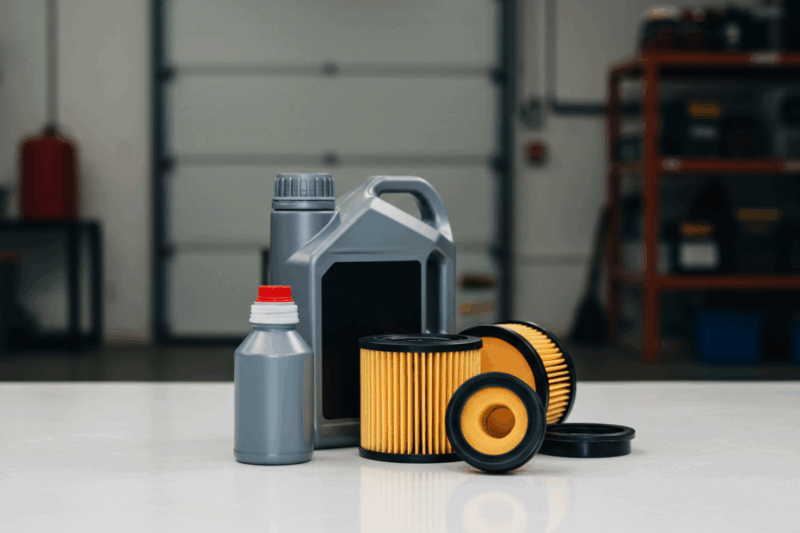Taking care of your car can feel overwhelming at times, but one of the simplest and most essential maintenance tasks is changing your oil. Regular oil changes are crucial for keeping your engine running smoothly and extending the life of your vehicle. But how often should you really be changing your car’s oil? Let’s break it down in this friendly guide.

Why Are Oil Changes Important?
Before diving into the “how often” question, let’s quickly talk about why oil changes matter. Engine oil is like the lifeblood of your car, it lubricates all the moving parts in the engine, reduces friction, and helps prevent overheating. Over time, oil breaks down, gets dirty, and becomes less effective at doing its job. If you skip oil changes, it can lead to engine wear and tear, reduced performance, and even costly damage.
The Traditional Rule, Every 3,000 Miles
For years, the golden rule was to change your car’s oil every 3,000 miles or every three months, whichever came first. This advice worked well for older vehicles and simpler engines that relied on conventional oil. However, times have changed! Thanks to advancements in engine technology and synthetic oils, many modern cars don’t need oil changes nearly as often.
What Do Modern Cars Require?
Most modern vehicles can go much longer between oil changes. Depending on the make and model of your car, you might be able to drive 5,000, 7,500, or even 10,000 miles before it’s time for a change. Some manufacturers even recommend oil changes every 15,000 miles for certain vehicles using high-quality synthetic oil.
So how do you know what’s right for your car? The best place to start is your owner’s manual. It contains specific recommendations from the manufacturer about how often to change your oil based on your car’s engine type and the oil it uses.
Factors That Affect Oil Change Frequency
While your owner’s manual is a great guide, there are other factors to consider that might impact how often you need an oil change:
- Driving Habits: If you mostly drive short distances or take frequent stop and go trips (like running errands around town), your engine may need more frequent oil changes. These conditions don’t allow the engine to fully warm up, which can cause oil to degrade faster.
- Driving Conditions: Do you frequently drive in extreme temperatures, dusty environments, or heavy traffic? These conditions can put extra stress on your engine and may require more regular maintenance.
- Type of Oil: Synthetic oils last longer than conventional oils and perform better under extreme conditions. If your car uses synthetic oil, you might be able to stretch out the time between changes.
- Age of Your Vehicle: Older cars with high mileage may benefit from more frequent oil changes to keep everything running smoothly. Some older engines also burn a bit of oil over time, so it’s a good idea to check your levels regularly.
What About Oil Change Indicators?
Many newer cars are equipped with oil life monitoring systems that track your driving habits and conditions to determine when you need an oil change. These systems take the guesswork out of maintenance by alerting you when it’s time for a fresh batch of oil. If your car has this feature, trust it! It’s designed specifically for your vehicle.
That said, it’s still a good idea to check your oil level and condition periodically. Even if the indicator hasn’t gone off yet, low or dirty oil can signal that it’s time for a change.
Signs Your Car Might Need an Oil Change
→ Not sure if it’s time for an oil change? Here are some common signs that your car might be due:
- Dark or Dirty Oil: Fresh oil is usually amber-colored and clear. If it looks dark or gritty on the dipstick, it’s time for a change.
- Loud Engine Noises: If your engine sounds louder than usual or you hear knocking sounds, it could mean the oil isn’t providing enough lubrication.
- Oil Warning Light: Never ignore an illuminated oil light on your dashboard—it’s a clear sign that something needs attention.
- Exhaust Smoke: Blue or gray smoke coming from your exhaust could indicate burning oil, which means it’s time for a check-up.
Tips for Staying on Top of Oil Changes
→ Keeping up with regular oil changes doesn’t have to be stressful! Here are some tips to make it easier:
- Set a Reminder: Whether you prefer using a smartphone app or an old-fashioned sticky note on your fridge, setting reminders can help you stay on top of your car’s maintenance schedule.
- Check Your Oil Regularly: Get into the habit of checking your oil every month or so. It only takes a few minutes and can help you catch issues early.
- Choose the Right Oil: Make sure you’re using the type of oil recommended by your manufacturer. If you’re unsure, consult your owner’s manual or ask a trusted mechanic.
- Keep Records: Keep track of when and where you get your oil changed. This can be helpful if you ever need to reference your maintenance history.
Conclusion
At the end of the day, how often you should change your car’s oil depends on a variety of factors, your car’s age, the type of oil you use, and your driving habits all play a role. The best thing you can do is follow your manufacturer’s recommendations and pay attention to how your car runs. Regular maintenance is key to keeping your vehicle in tip-top shape and avoiding expensive repairs down the road. So next time you’re wondering if it’s time for an oil change, remember: a little effort now can save you big headaches later.


![How to Check Your Tire Tread Depth at Home [No Tools Needed]](https://autoreviewzone.us/wp-content/uploads/2025/06/how-to-check-your-tire-tread-depth-at-home-no-tools-needed-800x533.png)
